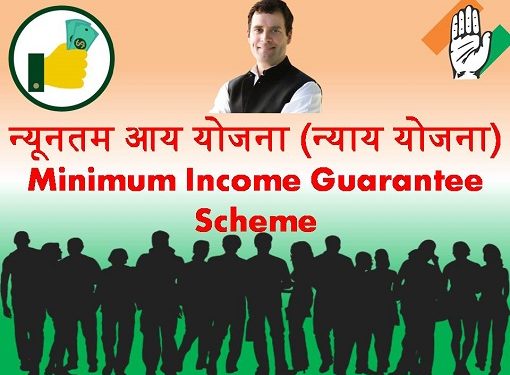Two weeks before the general elections 2019 kick off, Congress president Rahul Gandhi has announced, if voted to power, his party will provide Rs6,000 per month to 50 million poorest families of the country. This is the largest handout ever announced by a political party in India. The proposed NYAY (Nyuntam Aay Yojana) aims to provide Rs 72,000 annually to 20 per cent of the poorest families. The scheme, which has touched a populist chord in the country, is estimated to cost the exchequer a whopping Rs 3.6 lakh crore per annum which is about six times the annual spending on the Mahatma Gandhi National Rural Employment Guarantee Scheme (MGNREGS). Also, coming ahead of the general elections, the announcement will turn out to be an inflection point. Other political parties, especially the Bharatiya Janata Party, may sooner than later take a cue and announce a similar or bigger programme to outdo the Congress proposal. Ahead of his 12.25 pm address to the nation by Prime Minister Narendra Modi Wednesday, it appeared the PM will announce something which will be much bigger than Rahul’s NYAY. However, it was not to be. Such big-bang populist announcements are expected of political parties that are rather uncertain of their electoral success or desperate to cling on to it. Under the PM-KISAN, the NDA government has started giving out Rs 6,000 per annum to each beneficiary. The programme has not found good resonance in the country, especially in states such as Odisha and Telangana where the respective state governments have rolled out better packages for their farmers. The Congress won state-level elections in Chhattisgarh, Rajasthan and Madhya Pradesh promising farm loan waiver to farmers. Now the party has used it as another poll gimmick to win elections all-India. The party is yet to spell out the details of the scheme. The projected expenditure of Rs 3.6 lakh crore is twice the estimated amount set aside for food subsidy and five times that for fertiliser subsidy in the 2019-20 Union Budget. There has also been no word on how the Congress expects to finance NYAY. Where will the money come from? Will it scrap some of the existing welfare programmes and subsume them under NYAY? Another difficulty that will come its way is how to select the beneficiaries. Since the size of the freebie is relatively big, any slip-up in the exercise will have a big social and political backlash. Having stated that, the idea behind NYAY is not without merit. Experts such as former RBI Governor Raghuram Rajan have supported NYAY. Limited cash transfers in the form of direct farm income support in states such as Telangana and Odisha have helped redress agrarian distresses. Thus, if implemented well, NYAY will give a massive boost to consumption in rural areas. A seamless transfer of Rs 72,000 to the poor will go a long way in addressing basic problems of health, education and indebtedness of the poor and unemployed youth. NYAY can also stoke demand in rural areas, thereby helping economic growth. The flip side could be it will shrink the labour market. A large number of beneficiaries will withdraw themselves from the market as we saw post implementation of the Re 1 per kilo of rice scheme in Odisha. Unavailability of labour will push wages in rural areas, which will be a double-edged sword for the agrarian population in the country. The scheme in its current form looks half-baked, but Rahul Gandhi’s political googly has befuddled the NDA, which was coasting along on the high tide of the post-Balakot national mood. However, all said and done, doles are doles. They cannot be called as a silver bullet to fight poverty.
Far-Right Chile
Far-Right politics has claimed yet another South American country – Chile - with the recent victory of the ultraconservative lawyer,...
Read moreDetails





































